
Researchers using the ALMA observatory have detected water vapor in the disc around a young star, in a region where planets are likely forming. This discovery is pivotal because water is vital for life and plays a crucial role in planet formation. The findings reveal a substantial amount of water, suggesting its potential impact on the chemical composition of emerging planets. (Artist’s concept.) Credit: SciTechDaily.com
Water vapor has been discovered in a planet-forming disc around a young star, revealing conditions conducive to planet formation and potential influences on planet composition.
Researchers have found water vapor in the disc around a young star exactly where planets may be forming. Water is a key ingredient for life on Earth, and is also thought to play a significant role in planet formation. Yet, until now, we had never been able to map how water is distributed in a stable, cool disc — the type of disc that offers the most favorable conditions for planets to form around stars. The new findings were made possible thanks to the Atacama Large Millimeter/submillimeter Array (ALMA), in which the European Southern Observatory (ESO) is a partner.
Astonishing Observations With ALMA
“I had never imagined that we could capture an image of oceans of water vapor in the same region where a planet is likely forming,” says Stefano Facchini, an astronomer at the University of Milan, Italy, who led the study published on February 29 in Nature Astronomy. The observations reveal at least three times as much water as in all of Earth’s oceans in the inner disc of the young Sun-like star HL Tauri, located 450 light-years away from Earth in the constellation Taurus.
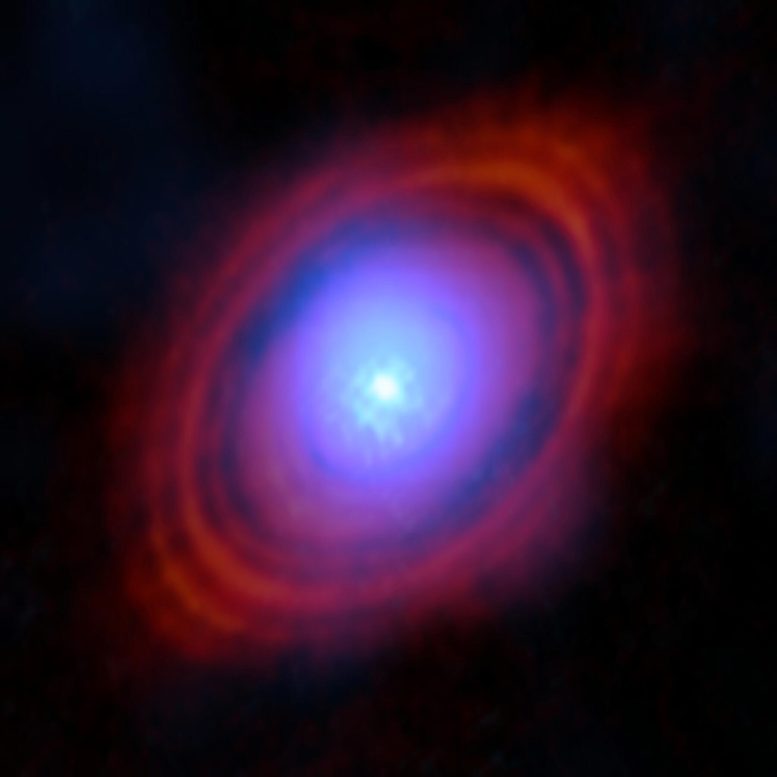
Astronomers have found water vapor in a disc around a young star exactly where planets may be forming. In this image, the new observations from the Atacama Large Millimeter/submillimeter Array (ALMA), in which ESO is a partner, show the water vapor in shades of blue. Near the center of the disc, where the young star lives, the environment is hotter and the gas brighter. The red-hued rings are previous ALMA observations showing the distribution of dust around the star. Credit: ALMA (ESO/NAOJ/NRAO)/S. Facchini et al.
“It is truly remarkable that we can not only detect but also capture detailed images and spatially resolve water vapor at a distance of 450 light-years from us,” adds co-author Leonardo Testi, an astronomer at the University of Bologna, Italy. The ‘spatially resolved’ observations with ALMA allow astronomers to determine the distribution of water in different regions of the disc. “Taking part in such an important discovery in the iconic HL Tauri disc was beyond what I had ever expected for my first research experience in astronomy,” adds Mathieu Vander Donckt from the University of Liège, Belgium, who was a master’s student when he participated in the research.
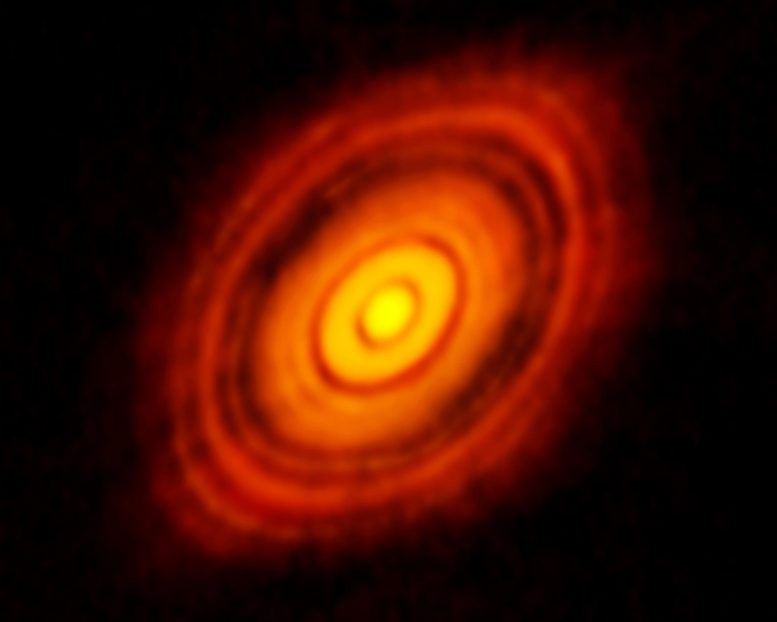
The Protoplanetary Disk of HL Tauri from ALMA. A so-called “ALMA disks” as seen in infrared light around distant stars. Credit: ALMA (ESO/NAOJ/NRAO), NSF
The Role of Water in Planet Formation
A significant amount of water was found in the region where a known gap in the HL Tauri disc exists. Ring-shaped gaps are carved out in gas- and dust-rich discs by orbiting young planet-like bodies as they gather up material and grow. “Our recent images reveal a substantial quantity of water vapor at a range of distances from the star that include a gap where a planet could potentially be forming at the present time,” says Facchini. This suggests that this water vapor could affect the chemical composition of planets forming in those regions.
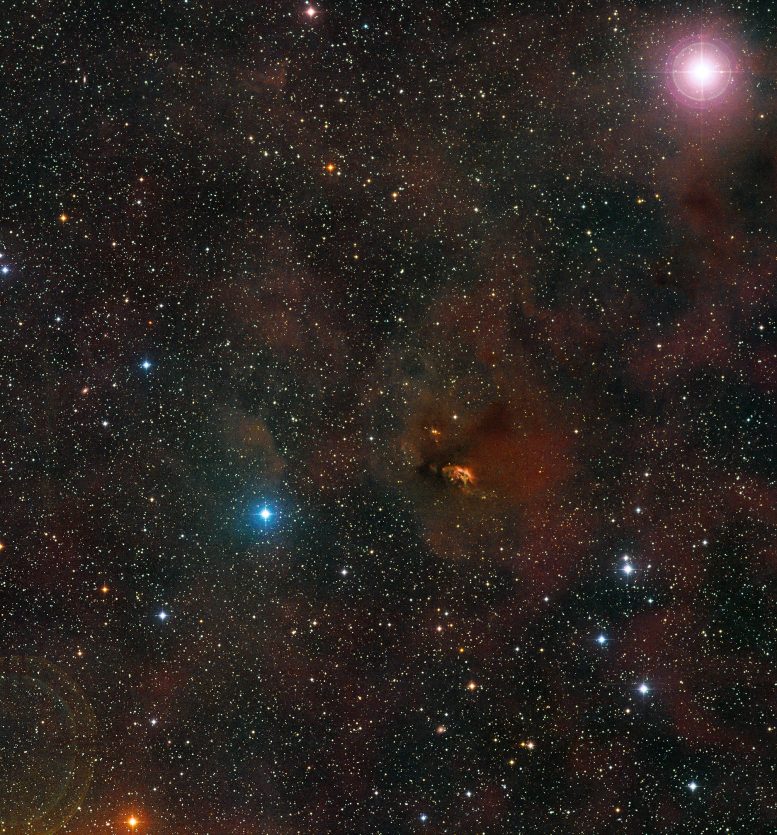
This image shows the region in which HL Tauri is situated. HL Tauri is part of one of the closest star-forming regions to Earth and there are many young stars, as well as clouds of dust, in its vicinity. This picture was created from images forming part of the Digitized Sky Survey 2. Credit: ESO/Digitized Sky Survey 2
Observing water with a ground-based telescope is no mean feat as the abundant water vapor in Earth’s atmosphere degrades the astronomical signals. ALMA, operated by ESO together with its international partners, is an array of telescopes in the Chilean Atacama Desert at about 5000 meters elevation that was built in a high and dry environment specifically to minimize this degradation, providing exceptional observing conditions. “To date, ALMA is the only facility able to spatially resolve water in a cool planet-forming disc,” says co-author Wouter Vlemmings, a professor at the Chalmers University of Technology in Sweden.[1]
This video takes you to the location of HL Tauri in the constellation of Taurus, 450 light-years away from Earth. The start of the sequence shows a wide view, including the Pleiades and Hyades naked-eye star clusters. It then zooms into a very detailed visible-light image from the NASA/ESA Hubble Space Telescope and ends with ALMA observations of water vapor in the HL Tauri disc. Credit: ALMA (ESO/NAOJ/NRAO)/NASA/ESA/N. Risinger (skysurvey.org). Music: Astral Electronic
Implications for Future Research
“It is truly exciting to directly witness, in a picture, water molecules being released from icy dust particles,” says Elizabeth Humphreys, an astronomer at ESO who also participated in the study. The dust grains that make up a disc are the seeds of planet formation, colliding and clumping into ever-larger bodies orbiting the star. Astronomers believe that where it is cold enough for water to freeze onto dust particles, things stick together more efficiently — an ideal spot for planet formation. “Our results show how the presence of water may influence the development of a planetary system, just like it did some 4.5 billion years ago in our own Solar System,” Facchini adds.
With upgrades happening at ALMA and ESO’s Extremely Large Telescope (ELT) coming online within the decade, planet formation and the role water plays in it will become clearer than ever. In particular, METIS, the Mid-infrared ELT Imager and Spectrograph, will give astronomers unrivaled views of the inner regions of planet-forming discs, where planets like Earth form.
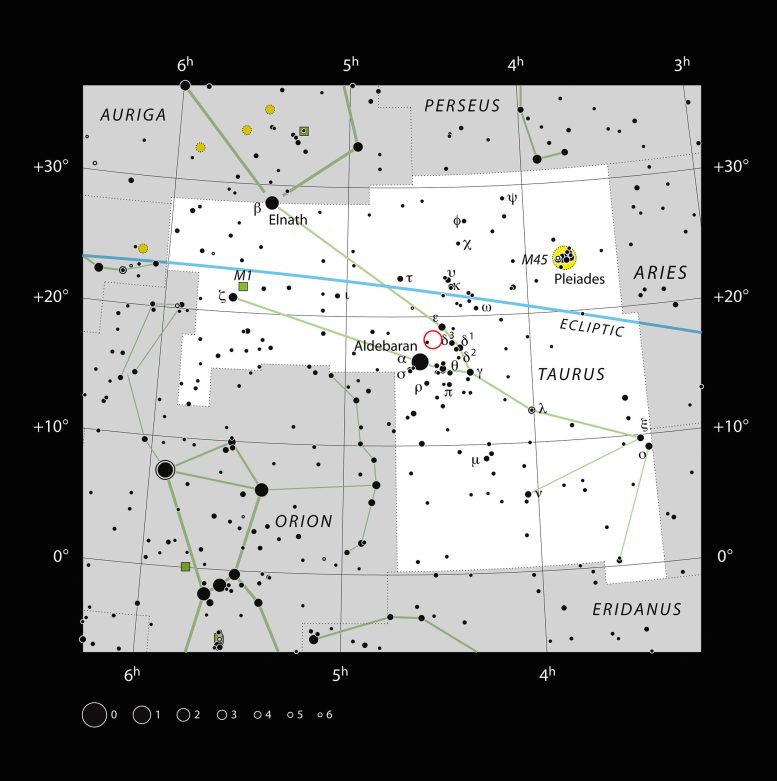
HL Tauri is a young star surrounded by a remarkable dusty disc. It is located in the famous constellation of Taurus (The Bull) shown in this image, close to the naked eye Pleiades and Hyades star clusters. This star is too faint to be seen with small telescopes. Credit: ESO, IAU and Sky & Telescope
Notes
- The new observations used the Band 5 and Band 7 receivers on ALMA. Bands 5 and 7 were European developments, at Chalmers/NOVA (Netherlands Research School for Astronomy) and IRAM (Institut de radioastronomie millimétrique), respectively, with involvement of ESO. Band 5 expanded ALMA into a new frequency range specifically for detecting and imaging water in the local Universe. In this study, the team observed three spectral lines of water across the two receiver frequency ranges to map gas at different temperatures within the disc.
Reference: “Resolved ALMA observations of water in the inner astronomical units of the HL Tau disk” by Stefano Facchini, Leonardo Testi, Elizabeth Humphreys, Mathieu Vander Donckt, Andrea Isella, Ramon Wrzosek, Alain Baudry, Malcom D. Gray, Anita M. S. Richards and Wouter Vlemmmings, 29 February 2024, Nature Astronomy.
DOI: 10.1038/s41550-024-02207-w
The team is composed of S. Facchini (Dipartimento di Fisica, Università degli Studi di Milano, Italy), L. Testi (Dipartimento di Fisica e Astronomia “Augusto Righi”, Università di Bologna, Italy), E. Humphreys (European Southern Observatory, Germany, Joint ALMA Observatory, Chile; European Southern Observatory Vitacura, Chile), M. Vander Donckt (Space sciences, Technologies & Astrophysics Research (STAR) Institute, University of Liège, Belgium), A. Isella (Department of Physics and Astronomy, Rice University, USA [Rice]), R. Wrzosek (Rice), A. Baudry (Laboratoire d’Astrophysique de Bordeaux, Univ. de Bordeaux, CNRS, France), M. D. Gray (National Astronomical Research Institute of Thailand, Thailand), A. M. S. Richards (JBCA, University of Manchester, UK), W. Vlemmings (Department of Space, Earth and Environment, Chalmers University of Technology, Sweden).


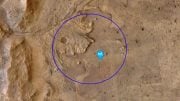





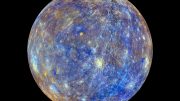
And where does this water vapor come from, out of nothing? Glory to the exalted One, Who is the only One with a plausible Answer.